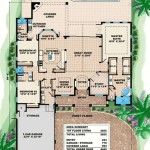Essential Aspects of a Comprehensive House Emergency Evacuation Plan
A well-crafted house emergency evacuation plan can significantly enhance your family's safety and preparedness in the event of an unforeseen circumstance. Here are some crucial aspects to consider when developing a comprehensive plan:
1. Establish Evacuation Routes and Meeting Points
Identify multiple escape routes from each room in your house. Discuss these routes with all family members and consider the needs of individuals with mobility impairments. Designate a primary and secondary meeting point outside your home, away from potential hazards. Clearly mark these locations and ensure everyone knows how to reach them.
2. Create an Emergency Communication Plan
Establish a clear communication plan for contacting each other during an emergency. List emergency contact numbers, including local authorities, family members, and out-of-state contacts. Keep a battery-powered or hand-crank weather radio to stay informed about updates and instructions. Consider using a pre-determined code word or phrase to communicate evacuation.
3. Assemble an Emergency Kit
Prepare an emergency kit containing essential supplies that can sustain your family for at least 72 hours. Include non-perishable food and water, first-aid supplies, prescription medications, a whistle or flashlight for signaling, and any special items for infants, the elderly, or pets.
4. Review and Practice the Plan Regularly
Conduct regular drills to familiarize your family with the evacuation routes and meeting points. Discuss different scenarios and practice evacuating during different times of day. Consider involving neighbors in these drills to foster community preparedness.
5. Consider Disabilities and Special Needs
Make necessary accommodations for family members with disabilities or special needs. Identify alternative evacuation routes or assistive devices. Ensure that the primary meeting point is accessible for everyone. Consider creating a designated safe space within your home for those who may require assistance.
6. Stay Informed and Alert
Monitor weather and emergency alerts regularly. Stay informed about potential risks in your area, such as wildfires, hurricanes, or chemical spills. Have a plan in place for evacuating in case of an unexpected emergency. Be prepared to adjust your evacuation plan based on specific hazards.
7. Additional Considerations
Consider the following additional aspects when developing your evacuation plan:
- Keep a copy of your evacuation plan in multiple locations, including your emergency kit and digital devices.
- Securely store your emergency kit in an easily accessible location known to all family members.
- Identify potential hazards within your home, such as flammable materials or unstable structures, and plan accordingly.
- Consider pet evacuation plans and provide appropriate supplies for your furry companions.
- Stay connected with your community and local authorities. Participate in neighborhood preparedness programs or community watch groups to enhance awareness and support.
Remember, a comprehensive house emergency evacuation plan is an ongoing process. Review and update it regularly to ensure its effectiveness. By taking these essential aspects into consideration, you can empower your family to evacuate safely and efficiently in the event of an emergency.

How To Create A Fire Evacuation Plan Travelers Insurance

Home Escape Planning City Of Richmond Hill

Home Evacuation Plan Tyngsborough Fire Department

8 Home Evacuation Plan Templates Ms Word

Family Evacuation And Emergency Plan Preparedness
Emergency Evacuation Plans Mydraw

07 19 21 July Safety Sam

Preventing A Fire In The Home Department Of And Emergency Services

Should You Have An Emergency Evacuation Plan For Your Home

Small Office Evacuation Plan Floor Layout








